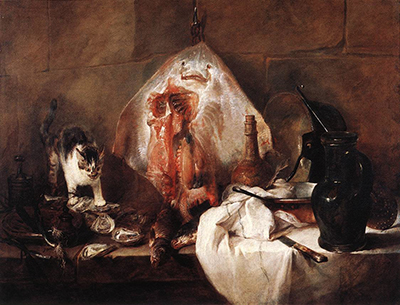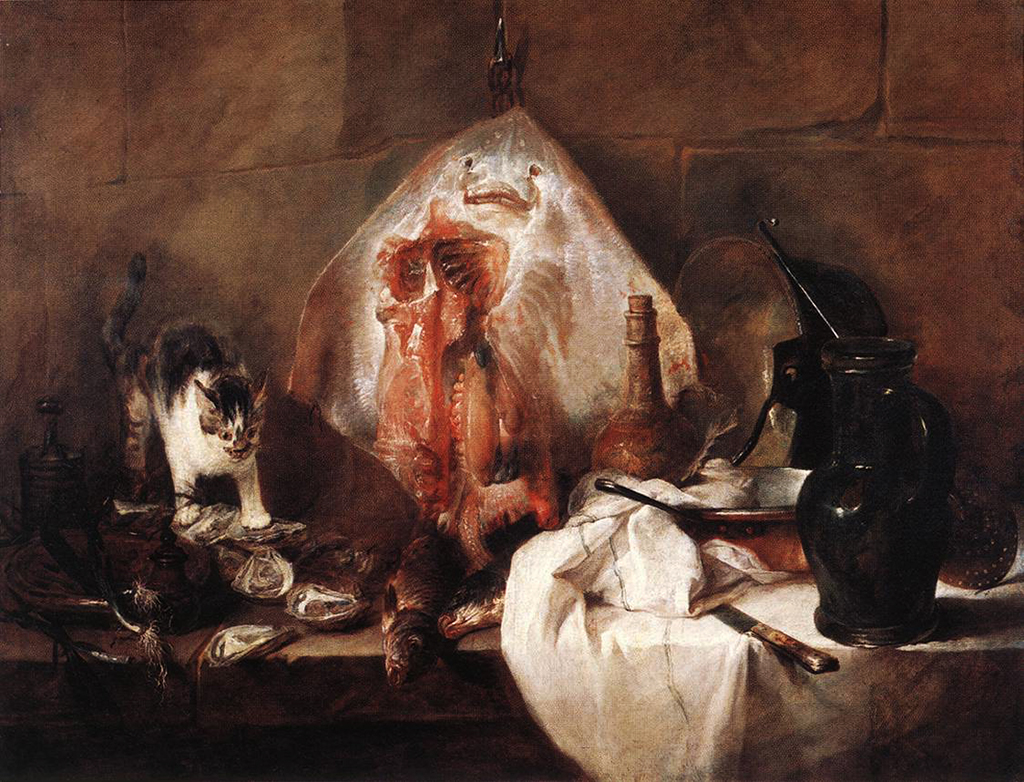The Ray, from 1728, is perhaps the Louvre's finest example of the technical ability of Chardin. He was arguably the true master of still life painting.
This famous art institution holds a collection of his paintings in several dedicated rooms which continues a relationship that started with the young budding student studying the great masters within their burgeoning collection himself. He would later have his own studio within these grounds too, where he helped shape a number of other notable artists including Jean-Honore Fragonard. The Ray was one of several notable paintings submitted by the artist in 1728, alongside The Buffet. He was seeking academic approval with in France at the time and would receive greater opportunities as a result of this impressive offering.
Several influential figures appreciated the technical qualities of The Ray and encouraged Chardin to become more closer aligned with the major French art establishments of the time. The artist took the advice given to him and applied to the Royal Academy. He was accepted immediately. From the point onwards he would be allowed to exhibit his new paintings at the Salon and that was where all of these new opportunities could be found. The style of The Ray would continue into a whole host of later artworks as Chardin continued to experiment with different variations on his still life theme, alternating between domestic settings, and the objects within them. He was considered by some to be a perfectionist, such were the number of amendments that he made to his compositions in order to find the perfect arrangement each time. This attention to detail ensured his output was restricted to just a handful of paintings each year.
Within this painting, the scene that we find in front of us is a small wooden table with a variety of objects upon it. Aside from that, there is a simple bricked wall behind and a small hook from which the ray itself is hung. An excitable kitten appears poised ready to attack on the left hand side, and aside from that there a number of bottles and other containers. A white cloth is covering one side of the table but has been left untidy, suggesting that we are not in a formal area of the property. The dark contrast also suggests that perhaps we are in a darkened corner of this property, maybe in a storage room or an old fashioned, untidy kitchen. There is additionally a knife and spoon too. Many of the items overhang the edge of the table which is something that Chardin did in his work in this genre, he did not like to simply portray a table with items organised neatly on top. This over hanging nature gives more of a vertical interest to each of these compositions that otherwise would have been the case.
There are, however, some slight differences between this painting and the artist's other still lifes. It is larger than most, for example, and stands at 114 cm × 146 cm. The fact that we can see the ray's entrails give a surprising brutality to this piece and also starts to raise questions about this setting in our own minds. By hanging the ray it is as if it is alive and standing, with its face almost laughing at us with a truly unsettling expression. To combine this with the internal turmoil that was on display below, feels like a more symbolic message than the plain reproductive qualities of many of his other paintings. There is something truly eery about the ray, leaving behind a memorable image which one cannot forget. This artwork gives an alternative view about cuisine, as well, as most of the items within it could be used for the preparation of a meal but when we examine this butchered ray, with bones revealed to the naked eye after some sort of savage attack, we are not given the same romantic view of food that others have portrayed in art.





